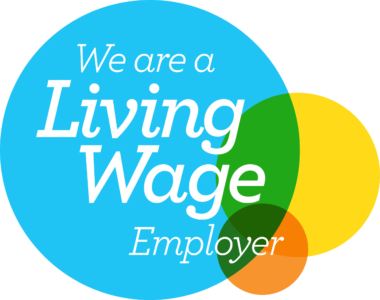On 23 March 2021, Birketts’ Head of Charities, Liz Brownsell, delivered a webinar on Setting up a Charity or a Social Enterprise. There were a number of questions submitted during the webinar. Here, Liz provides some additional guidance on some of the questions raised.
We are setting up an international charity, what are the main considerations legally that we need to think about?
The legal process of setting up a charity registered in England and Wales that will operate internationally is broadly the same as setting one up which will operate locally or nationally. However, there are a number of additional considerations, depending on where your charity will be operating and how you will deliver services on the ground.
The key differentiator is that you will need to carry out a thorough risk assessment of the jurisdictions in which your charity will be operating and consider how to mitigate the identified risks. The Charity Commission will expect you to provide details as to how the charity trustees will manage these risks when you apply to register the charity. So, it is essential that you have considered this before submitting your application.
The Charity Commission has identified the main risks for charities working internationally as:
- Reputational damage
- Corruption in foreign countries
- Conflict and political instability
- Terrorism
- Difficulty in communication or miscommunication with partners on the ground
- Poor behaviour / management of partner organisations working remotely
- Safeguarding.
The Commission has published guidance on how to manage risks when working internationally, and the International Charities Engagement Team blog on how to assess risk for charities working internationally should also be helpful.
We would also recommend that you work through the Charity Commission’s Compliance Toolkit on protecting charities from harm to ensure that all risks have been identified and that appropriate policies, procedures and risk-mitigating measures have been put in place, as appropriate to the proposed activities of the charity.
I have a limited company already, should I set up a charity or charitable foundation?
Most successful businesses have a strong CSR programme, but some companies choose to go one step further and establish their own charitable foundation through which they may channel their charitable giving.
Whilst it is perfectly acceptable for a company to be the founder of a charitable foundation, it is important that you understand what is and is not possible as a matter of charity law before getting started. The Charity Commission has published a guide to corporate foundations, which sets out all of the key legal considerations, which we would recommend you should read to help you decide whether or not setting up a charitable foundation to sit alongside your business is the most appropriate way to achieve your goals.
The most important point to understand is that a charitable corporate foundation must operate independently of the founding company. This means that you cannot dictate the charity’s activities based on your own CSR agenda. So, if you wish to retain total control over your company’s charitable giving, then establishing a separate charitable corporate foundation might not be right for you.
How do we change from a charity to a CIO?
It is very common for the charity trustees of unincorporated charities (i.e. charitable trusts or charitable unincorporated associations) to feel concerned about the risk of personal liability and to consider changing the legal status of their charity.
If your charity owns property, employs staff and/or provides services to members of the public, there is a risk of claims by third parties. For unincorporated charities, this brings with it a risk of personal liability for the charity trustees. Whilst this risk can be mitigated with appropriate insurance cover, there nevertheless remains a residual risk of personal liability for the charity trustees, and this can sometimes present a barrier to the recruitment of trustees. It can also sometimes cause a conflict of interests in respect of decision-making, with concern about the risk of personal liability impacting a trustee’s ability to take a decision solely in the best interests of the charity.
If you have decided that incorporation as a CIO (or charitable company) is in the best interests of your charity, the process to change legal structure involves first setting up a new CIO (or charitable company) and then transferring all assets, liabilities, employees and contracts of the unincorporated charity across to that newly formed CIO (or charitable company). Following completion of the process, the charity will be operating under its new registered charity number and the old charity will usually be removed from the register of charities.
The Charity Commission has published guidance on changing your charity structure. However, depending on the complexity of your assets, you might need professional advice to assist you with the asset transfer process. To receive a no-obligation quote for the incorporation of your charity, please get in touch to request a copy of our Charity Incorporation Scoping Questionnaire.
What is the process for converting an industrial and provident society into a registered charity?
With effect from 1 August 2014, the Co-operative and Community Benefit Societies Act 2014 changed the name of industrial and provident societies to either “co-operative” societies or “community benefit” societies, depending on which conditions of registration they fulfil. We assume that this question refers to a charitable community benefit society.
Since 1 January 2018 is has been possible to convert a non-charitable community benefit society into a CIO, provided that if it has a share capital all of the shares must be fully paid up. However, unfortunately it is not currently possible to convert a charitable community benefit society into a CIO.
This means that the only way to convert a charitable community benefit society into a registered charity is to convert into a charitable company limited by guarantee. The conversion process is set out in s112 of the Co-operative and Community Benefit Societies Act 2014. The process involves drafting suitable memorandum and articles of association, then passing two special resolutions at general meetings held at least 14 days and no more than one month apart, submitting an application to Companies House, making a statutory declaration, and then applying to the FCA to register the conversion. Once completed, it is common practice to formally convey and assign all contracts, assets and property from the old society to the new company (however, there is some doubt as to whether or not this step is legally required). The final step in the process is to submit an application to register the charitable company with the Charity Commission for England and Wales.
The process is not straightforward and if you feel that your charity would benefit from professional support, please do get in touch to discuss your requirements.
If you would like advice or support with setting up a charity or a social enterprise, or changing the legal status of your existing organisation, please get in touch with Liz Brownsell or another member of the Birketts Charities Team.
The content of this article is for general information only. It is not, and should not be taken as, legal advice. If you require any further information in relation to this article please contact the author in the first instance. Law covered as at April 2021.








